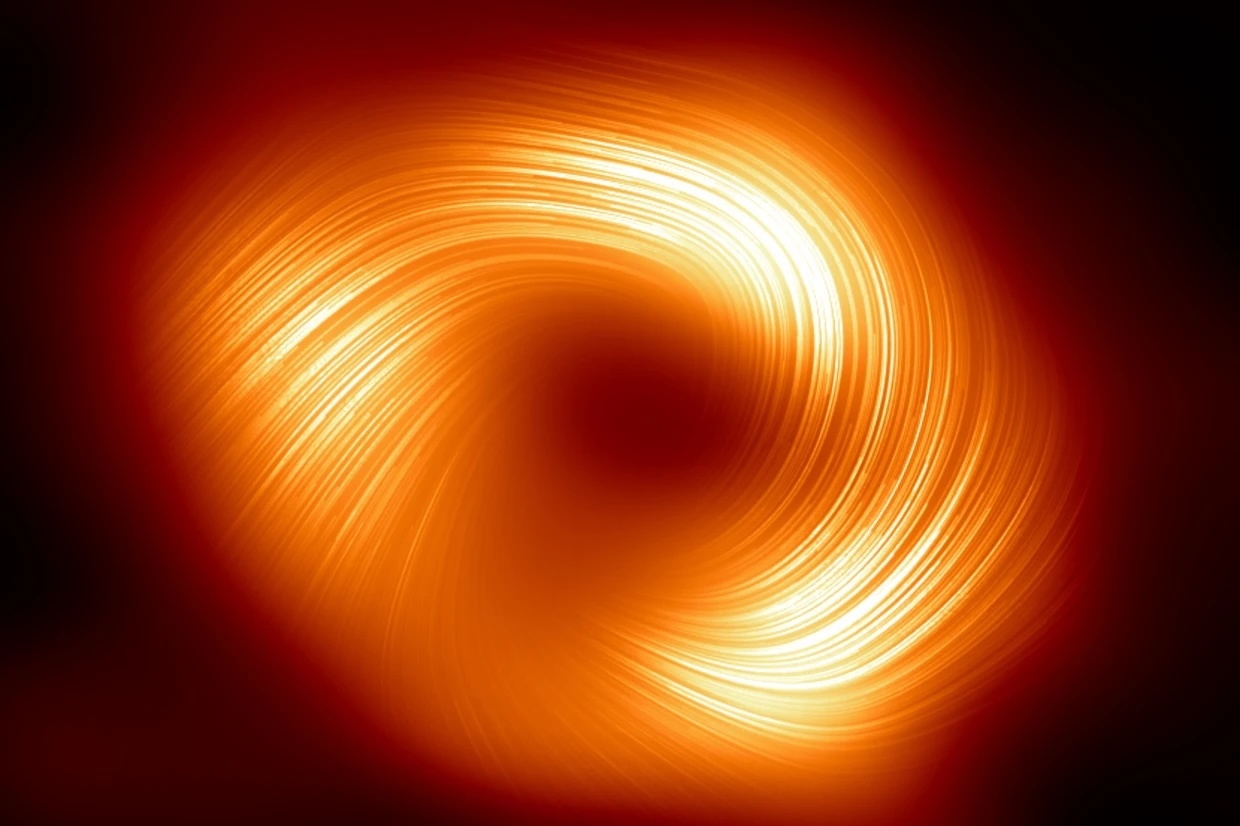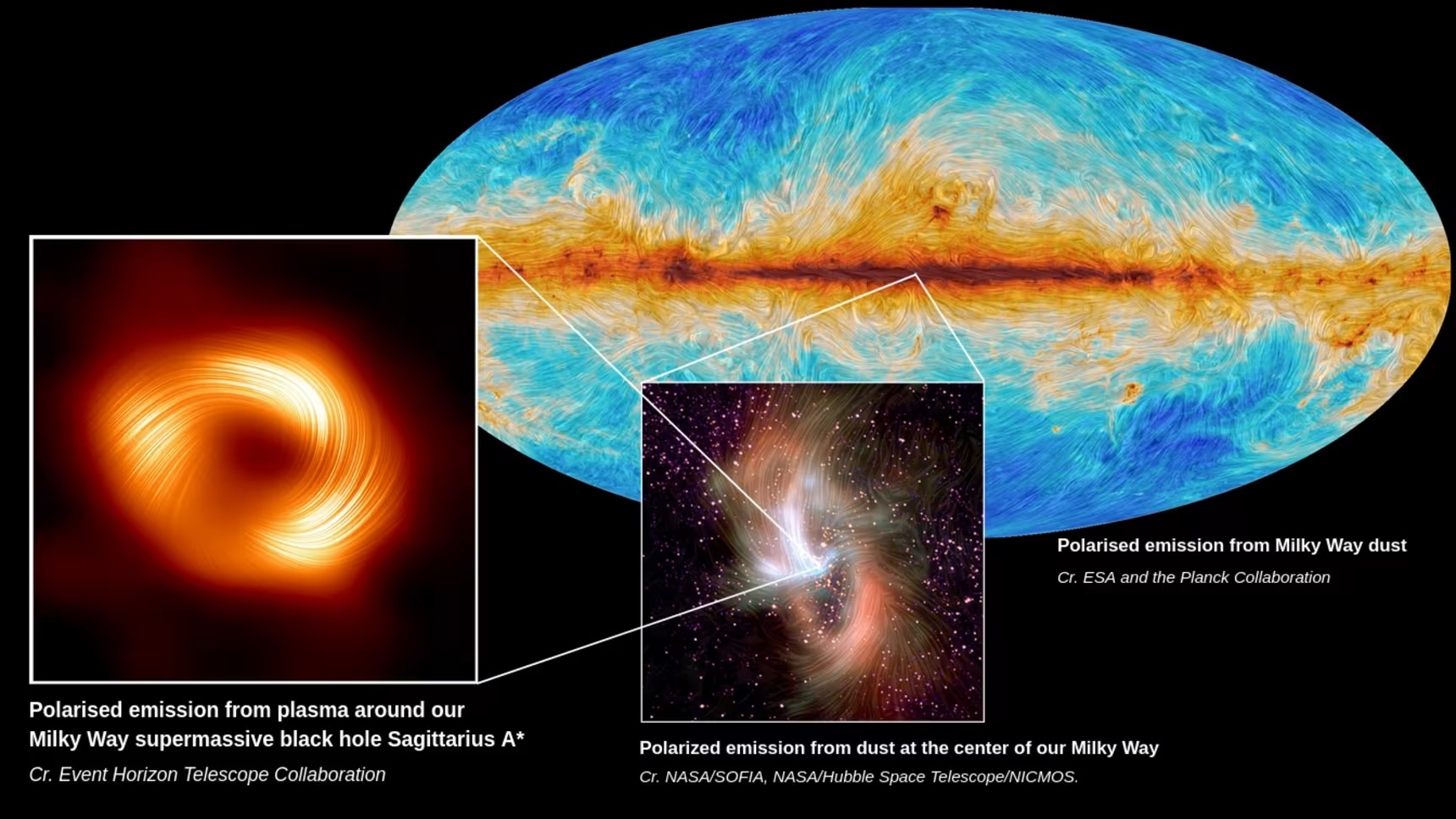29.03.2024
The image offers a never-before-seen view of the black hole at the center of our galaxy, as well as a clue that many or all black holes may share a pattern.

The Event Horizon Telescope collaboration has captured a new view of the black hole at the center of our galaxy.EHT Collaboration
A striking new image of the supermassive black hole at the center of our galaxy has revealed the strong magnetic field that surrounds it, twisting and turning like a spiral.
It’s a never-before-seen view of Sagittarius A* (or Sgr A*), the immense black hole at the Milky Way’s core that gobbles up nearby light and matter.
The image suggests there are structural similarities between this black hole and one at the heart of a galaxy called M87. That black hole — the first ever imaged — is more than 1,000 times larger than Sagittarius A*, but both appear to have powerful, organized magnetic fields.
It’s a clue that the pattern may be common to many or all black holes, according to the scientists behind the image, whose findings were published Wednesday in The Astrophysical Journal Letters.
“We’ve learned that strong and ordered magnetic fields are critical to how black holes interact with the gas and matter around them,” a co-leader of the research, Sara Issaoun, the NASA Hubble Fellowship Program’s Einstein fellow, said in a statement.
To conduct the research, Issaoun collaborated with an international team of astronomers known as the Event Horizon Telescope; the group is made up of more than 300 scientists from 80 institutions around the world.
The same research collaboration captured the first direct visual evidence of Sagittarius A* in 2022, and the team has also studied the M87 galaxy, which is around 53 million light-years from Earth.
The magnetic field surrounding the behemoth black hole at that galaxy's center, known as M87*, is thought to play a key role in its dramatic behavior: The black hole launches a powerful jet of electrons and other subatomic particles into space at nearly the speed of light.
Such an outburst of activity has never been detected within Sagittarius A*, but the similarities between the two black holes may suggest that a hidden jet could yet be found coming from it, according to the researchers behind the new image.

Left: the supermassive black hole at the center of the Milky Way galaxy, Sagittarius A*, seen in polarized light. The visible lines indicate the orientation of polarization, which is related to the magnetic field around the black hole. Center: the polarized emission from the center of the Milky Way, as captured by NASA's Stratospheric Observatory for Infrared Astronomy. Back right: the Planck Collaboration mapped polarized emission from dust across the Milky Way. S. Issaoun, EHT Collaboration
Sagittarius A*, which is about 27,000 light-years away from Earth, is 4 million times more massive than the sun.
The new image of the twisted magnetic field around it was released in polarized light. The human eye cannot differentiate polarized light from what we consider “normal” light; the term refers to waves of light that oscillate in a particular way. The orientation of those vibrations enables scientists to pick out vivid details of magnetic field lines and map their characteristics.
“By imaging polarized light from hot glowing gas near black holes, we are directly inferring the structure and strength of the magnetic fields that thread the flow of gas and matter that the black hole feeds on and ejects,” Angelo Ricarte, a Harvard Black Hole Initiative Fellow who co-led the new research, said in a statement.
The study's findings will help researchers compare black holes of different sizes and masses and may unlock new secrets of these immense features.
Quelle: NBC News

